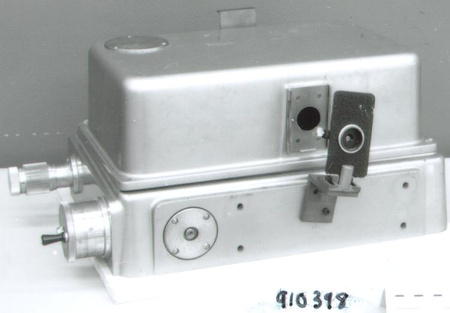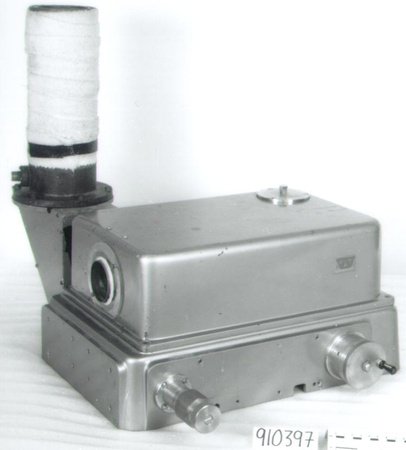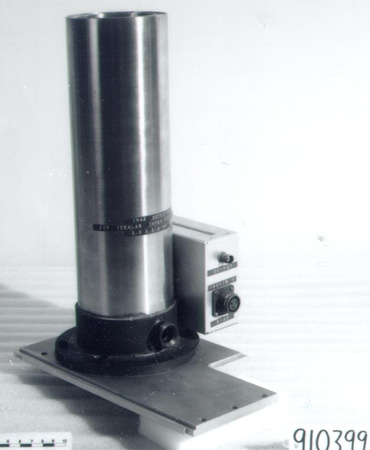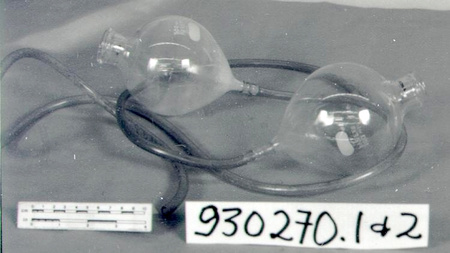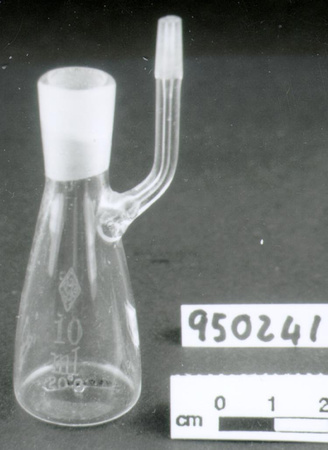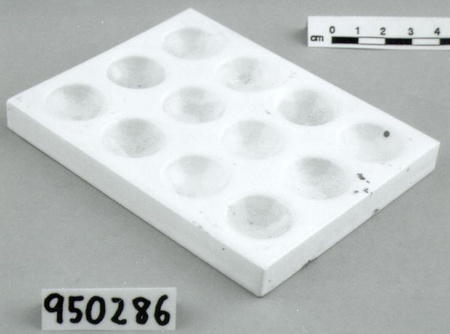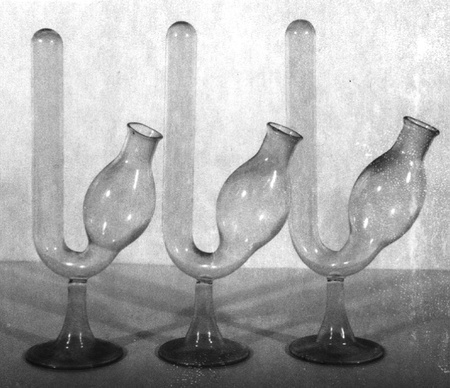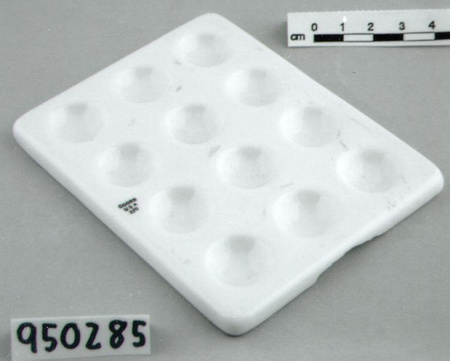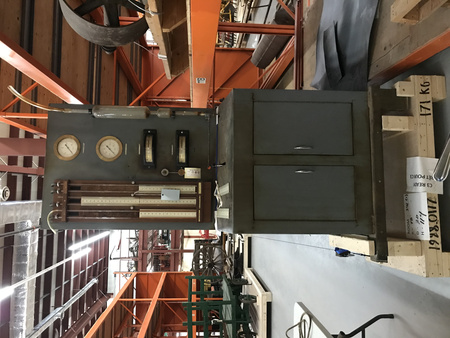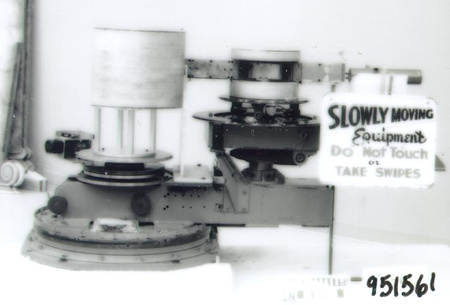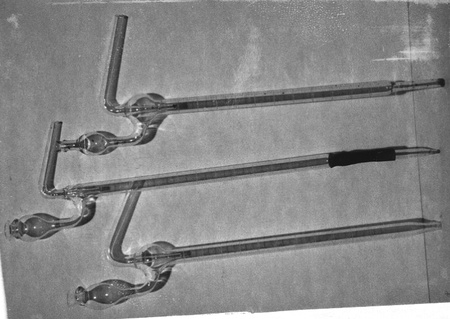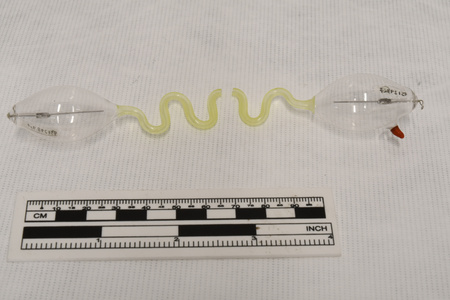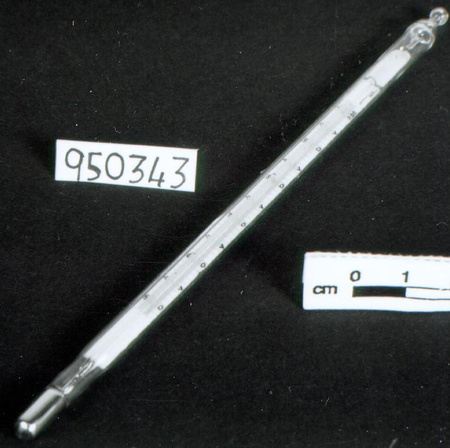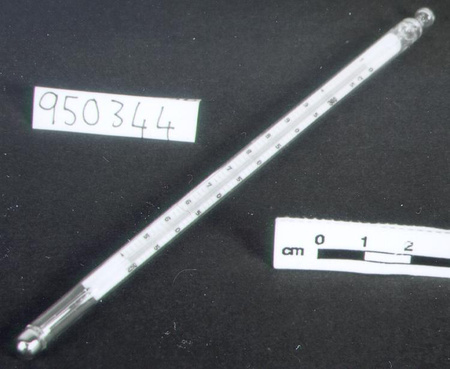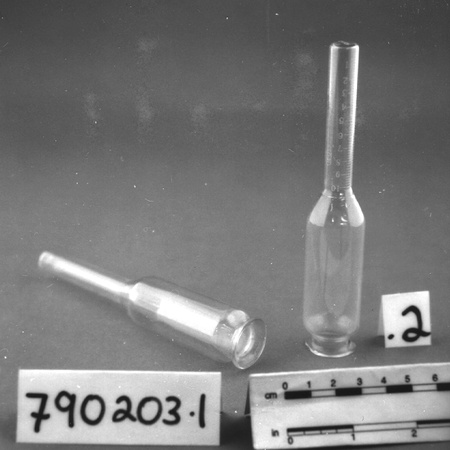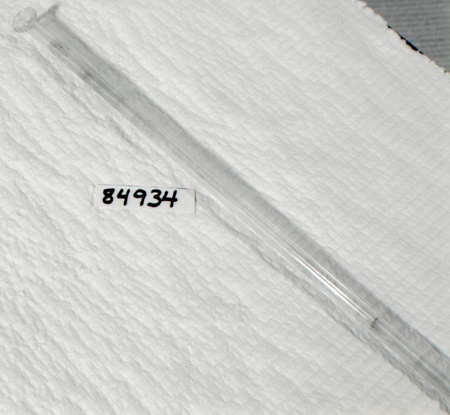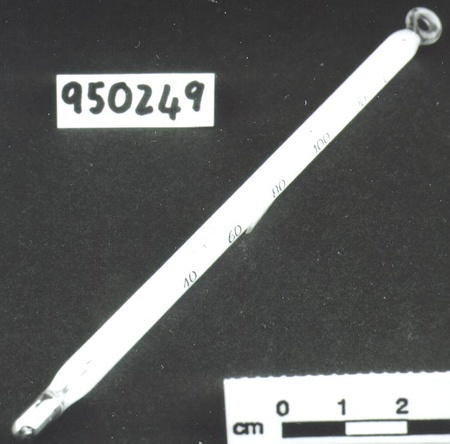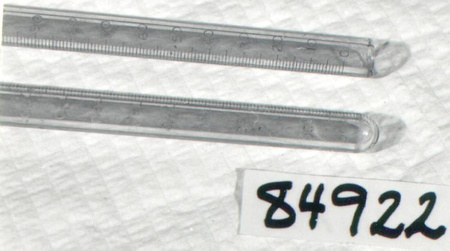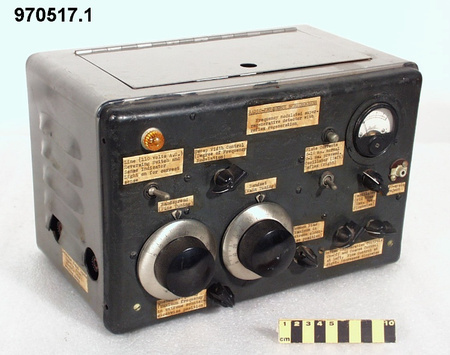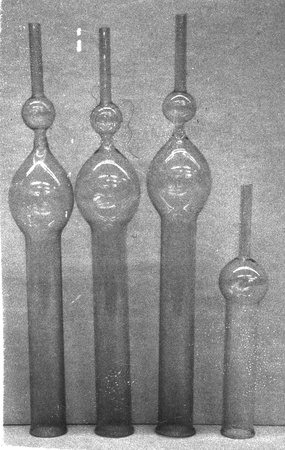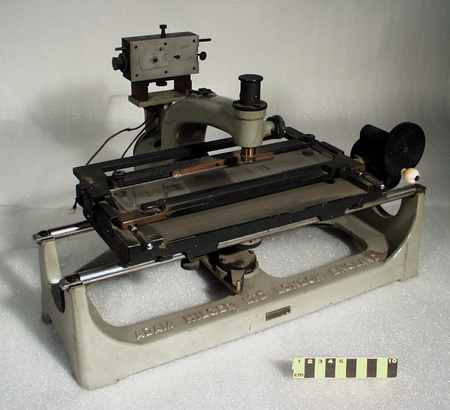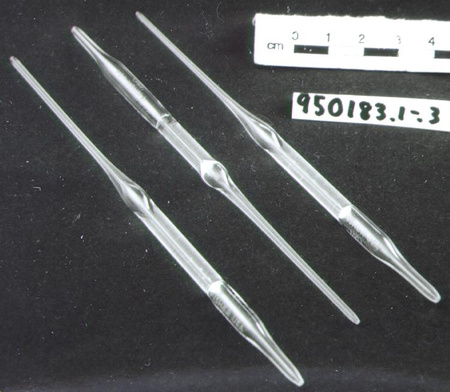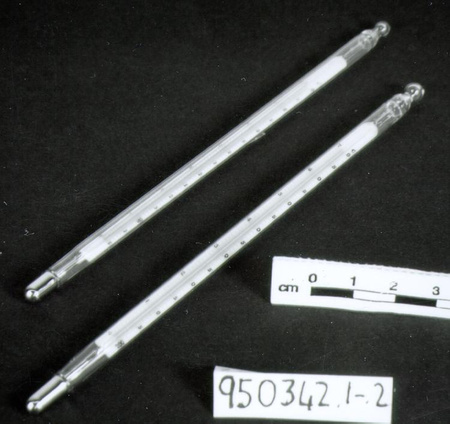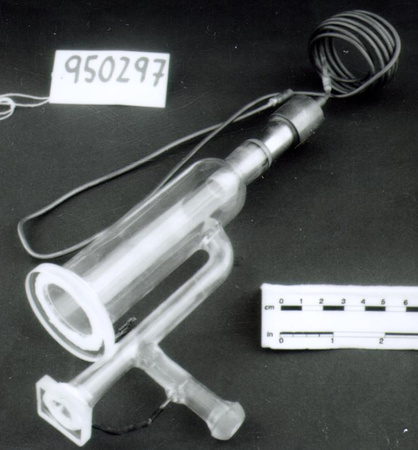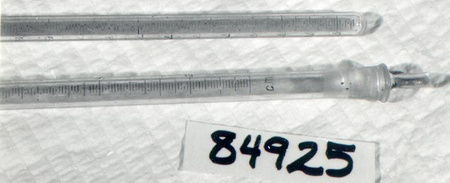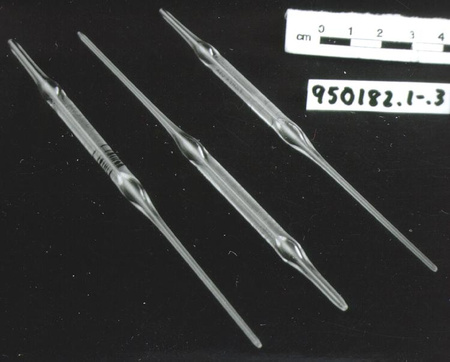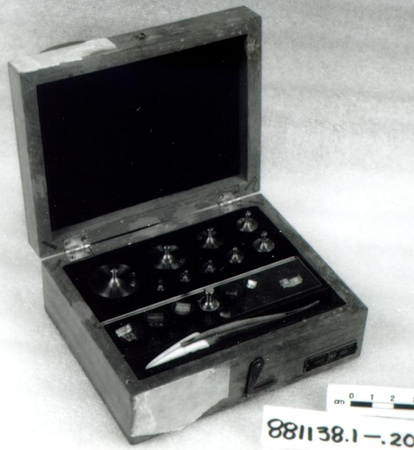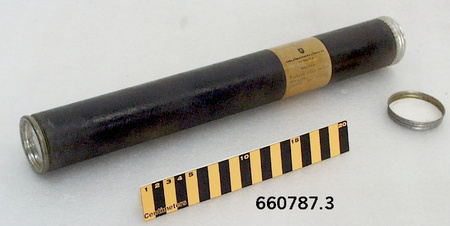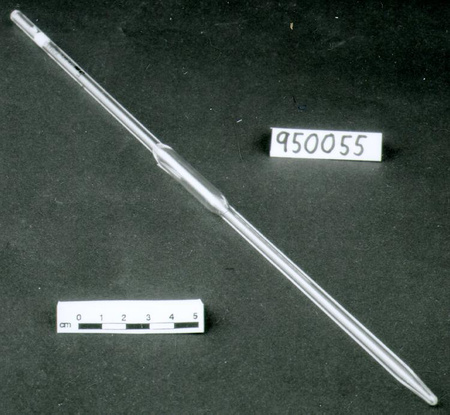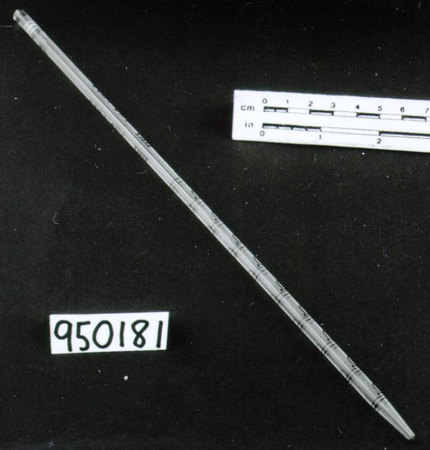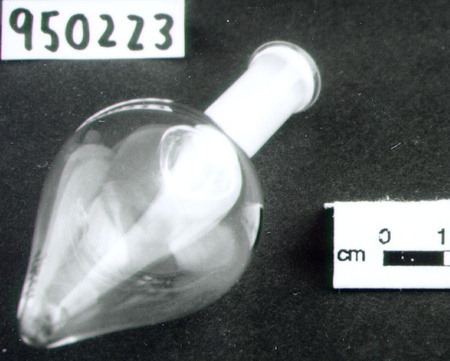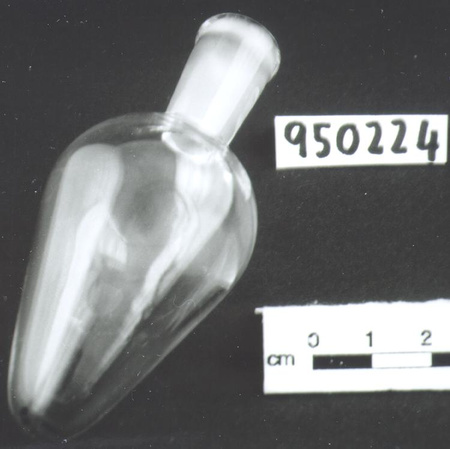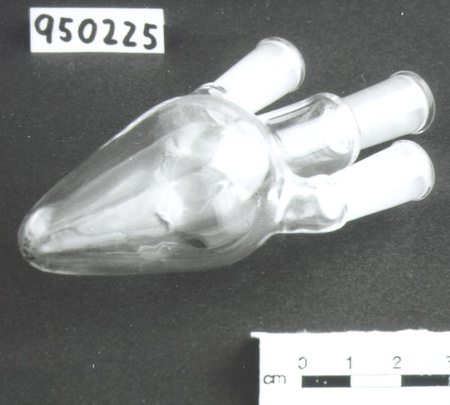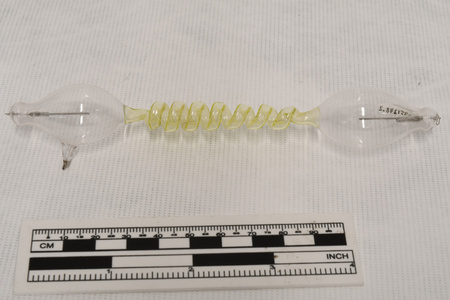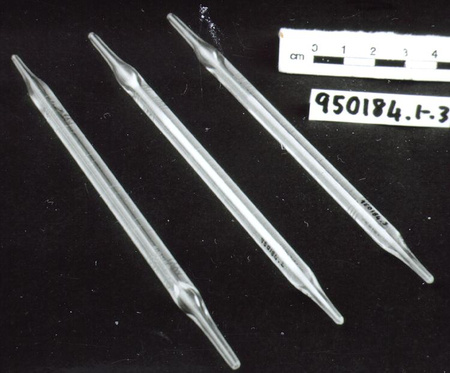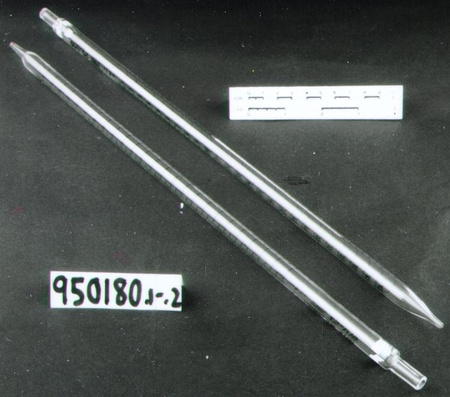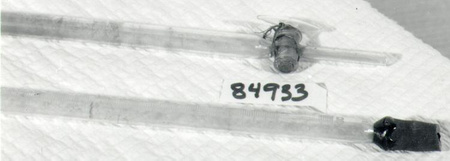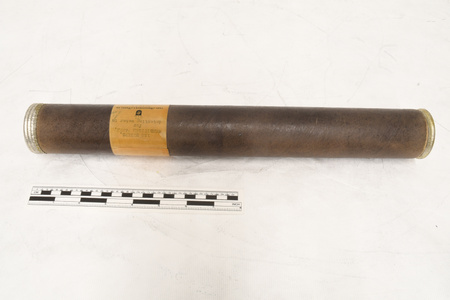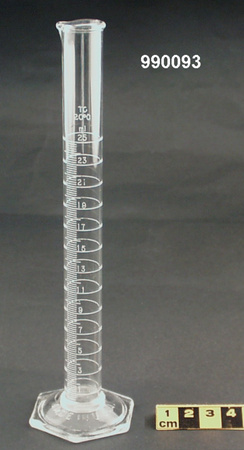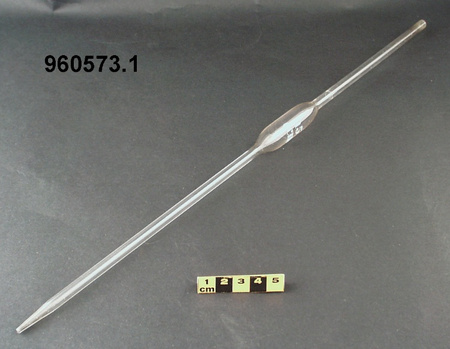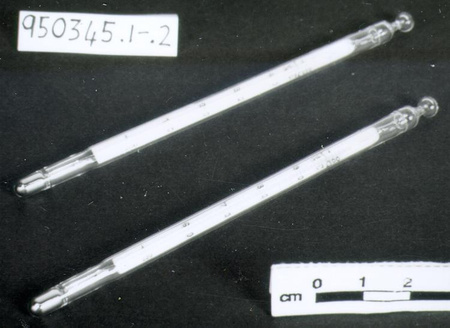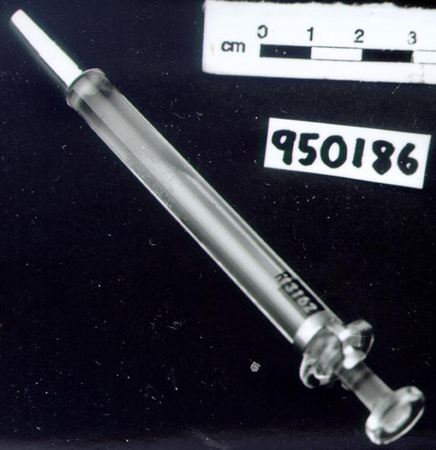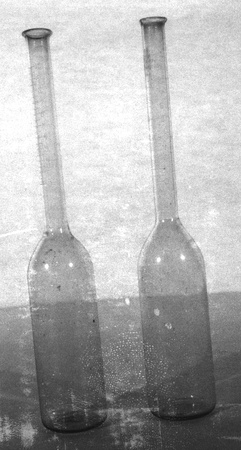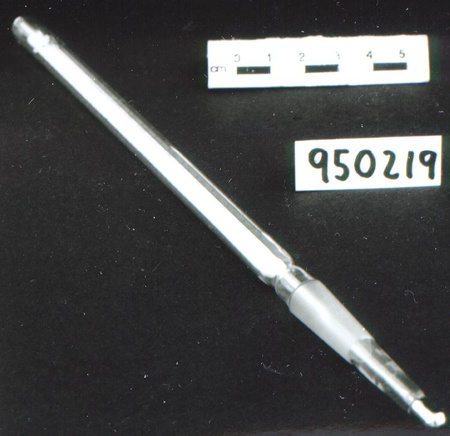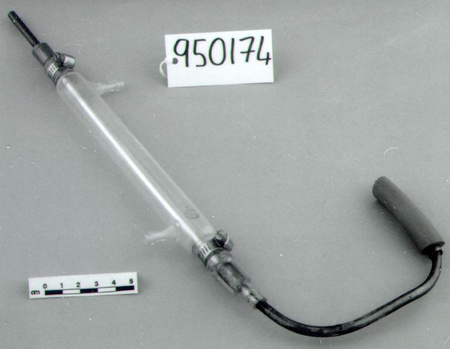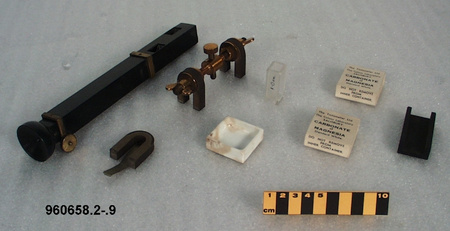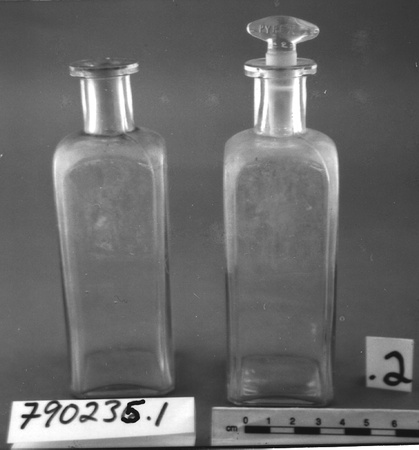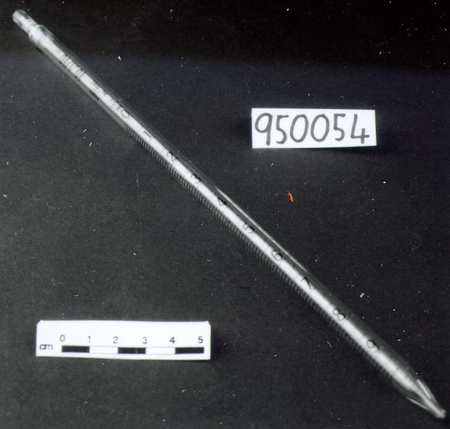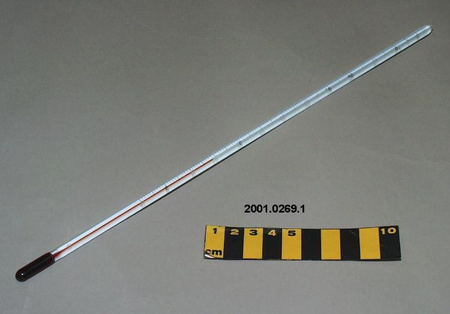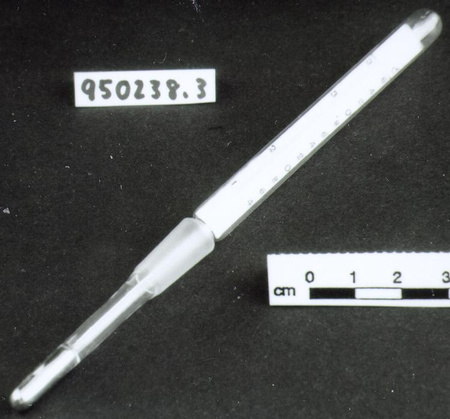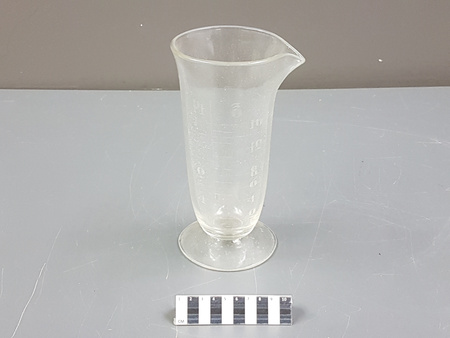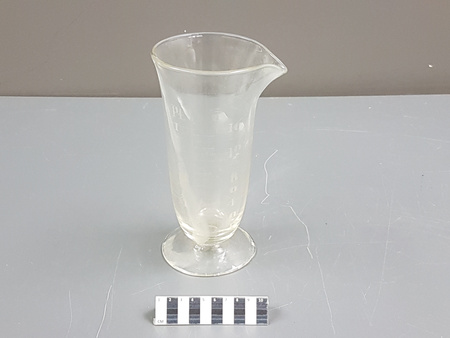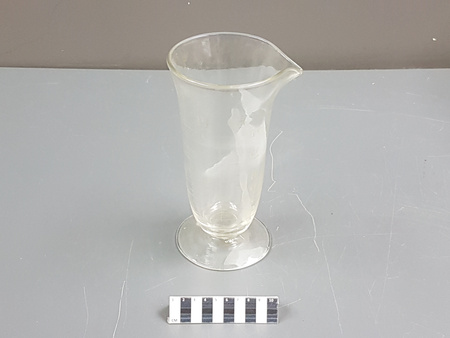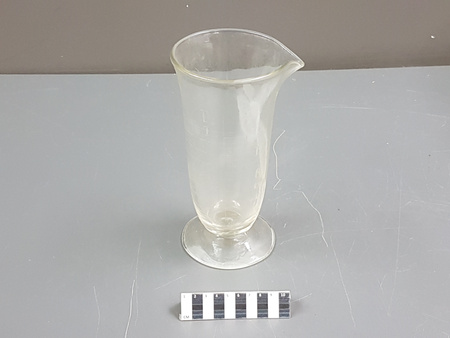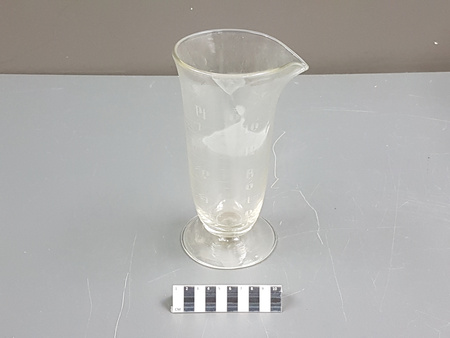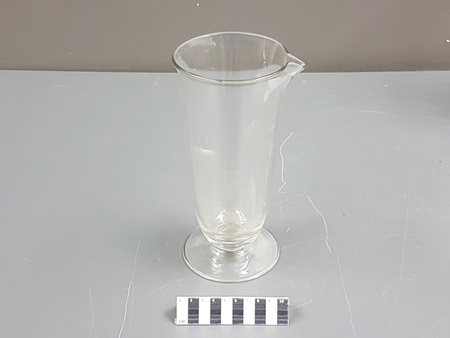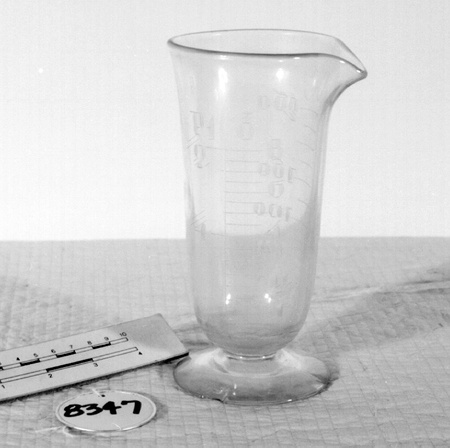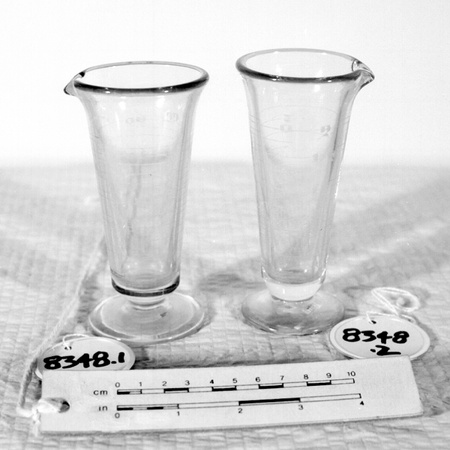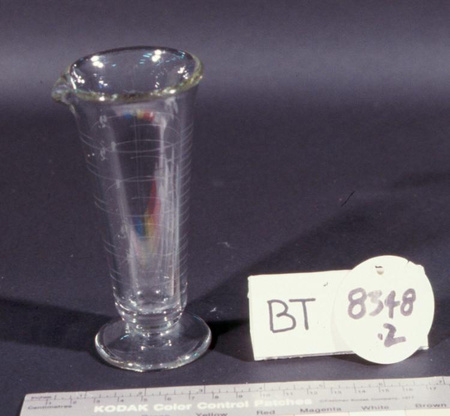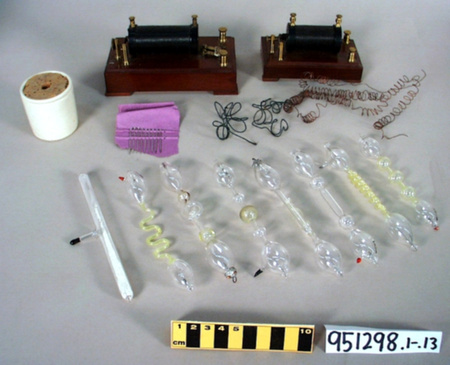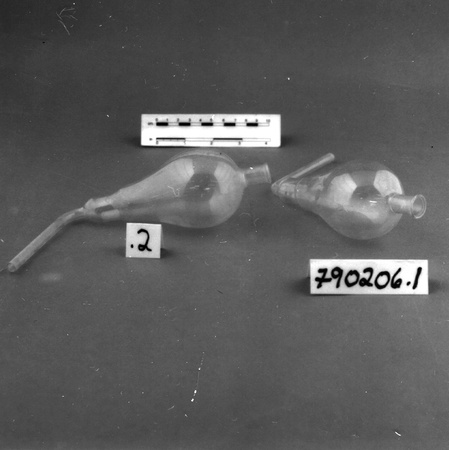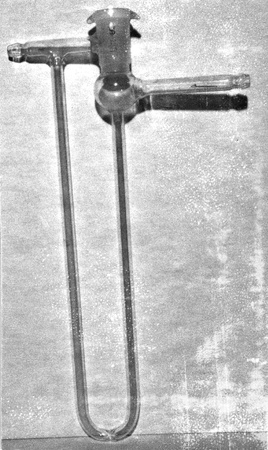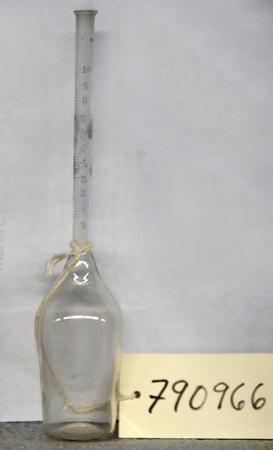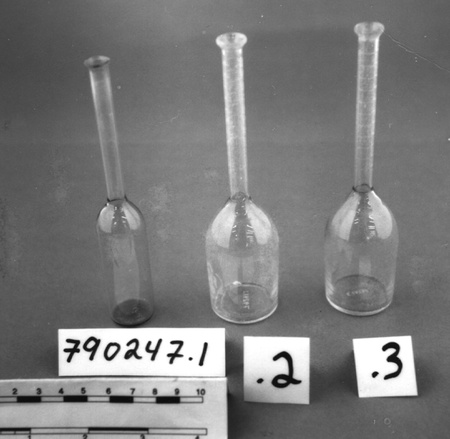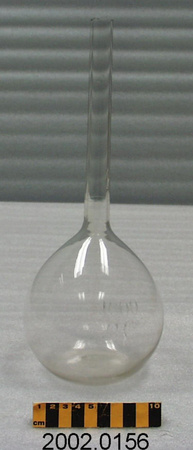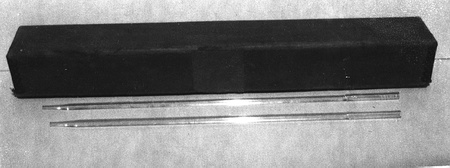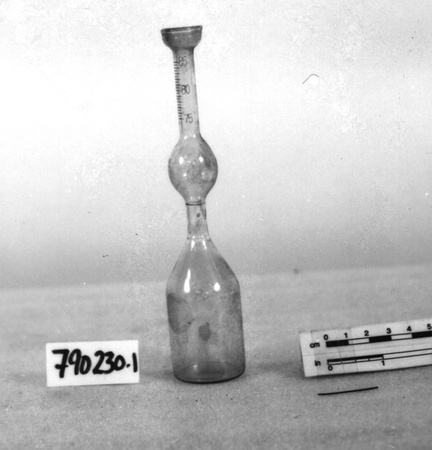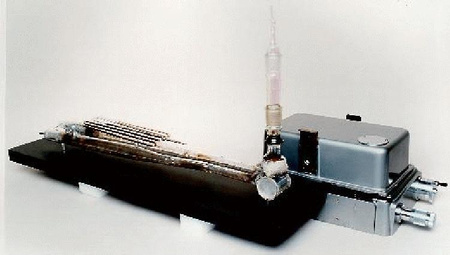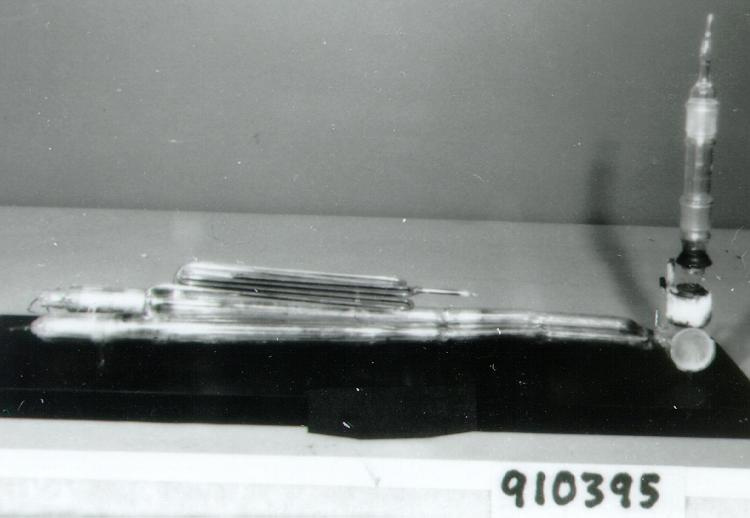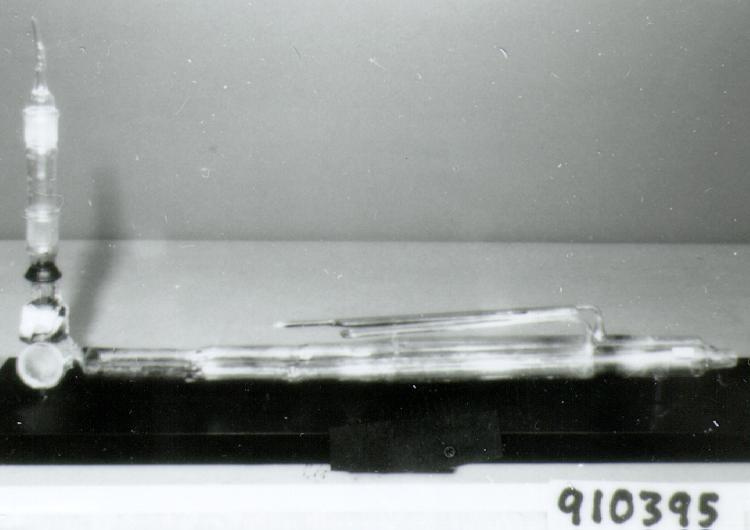Cell, reaction
Use this image
Can I reuse this image without permission? Yes
Object images on the Ingenium Collection’s portal have the following Creative Commons license:
Copyright Ingenium / CC BY-NC-ND (Attribution-NonCommercial 4.0 International (CC BY-NC 4.0)
ATTRIBUTE THIS IMAGE
Ingenium,
1991.0395.001
Permalink:
Ingenium is releasing this image under the Creative Commons licensing framework, and encourages downloading and reuse for non-commercial purposes. Please acknowledge Ingenium and cite the artifact number.
DOWNLOAD IMAGEPURCHASE THIS IMAGE
This image is free for non-commercial use.
For commercial use, please consult our Reproduction Fees and contact us to purchase the image.
- OBJECT TYPE
- GLASS
- DATE
- 1956–1957
- ARTIFACT NUMBER
- 1991.0395.001
- MANUFACTURER
- University of Toronto, Dept. of Chemistry
- MODEL
- Unknown
- LOCATION
- Toronto, Ontario, Canada
More Information
General Information
- Serial #
- N/A
- Part Number
- 1
- Total Parts
- 2
- AKA
- N/A
- Patents
- N/A
- General Description
- GLASS (PYREX) TUBING/ SODIUM CHLORIDE (SALT) WINDOWS/ COPPER TUBING/ PLATINUM ELECTRODE MATERIAL/ ASBESTOS INSULATION
Dimensions
Note: These reflect the general size for storage and are not necessarily representative of the object's true dimensions.
- Length
- 80.0 cm
- Width
- 12.0 cm
- Height
- 22.0 cm
- Thickness
- N/A
- Weight
- N/A
- Diameter
- N/A
- Volume
- N/A
Lexicon
- Group
- Chemistry
- Category
- Test-measurement equipment
- Sub-Category
- N/A
Manufacturer
- AKA
- University
- Country
- Canada
- State/Province
- Ontario
- City
- Toronto
Context
- Country
- Canada
- State/Province
- Ontario
- Period
- C.1956-1958
- Canada
-
This custom-made apparatus was used by Polanyi graduate student J.K. Cashion at the University of Toronto. The experiments performed with it were the forerunners of those that led to the award of the 1986 Nobel Prize for chemistry to Canadian scientist John Polanyi. - Function
-
Apparatus in which hydrogen atoms were mixed with fluorine & chlorine molecules in order to record the infrared spectrum resulting from the reaction. The infrared emissions were recorded by means of a spectrometer. This equipment was used in early exploratory work on the feasibility of this approach. - Technical
-
Results of these experiments led Polanyi to believe it was possible to obtain experimental determinations of partitioning of reaction energy into product kinetic energy by detailed analysis of infrared emission spectra. This was only first step & many problems remained but these experiments led directly to the prediction & subsequent construction of 1st chemical laser. - Area Notes
-
Unknown
Details
- Markings
- NONE
- Missing
- THE OPTICS USED TO FOSCUS THE INFRARED INTO THE SPECTROMETER ARE MISSING.
- Finish
- COLOURLESS, TRANSPARENT HANDBLOWN GLASS
- Decoration
- NONE
CITE THIS OBJECT
If you choose to share our information about this collection object, please cite:
University of Toronto, Dept. of Chemistry, Cell, reaction, circa 1956–1957, Artifact no. 1991.0395, Ingenium – Canada’s Museums of Science and Innovation, http://collection.ingenium.ca/en/id/1991.0395.001/
FEEDBACK
Submit a question or comment about this artifact.
More Like This

